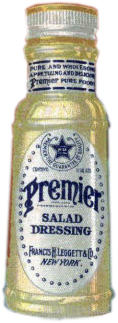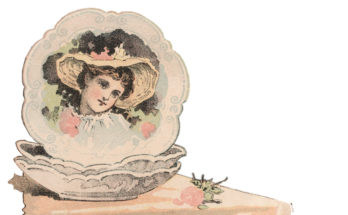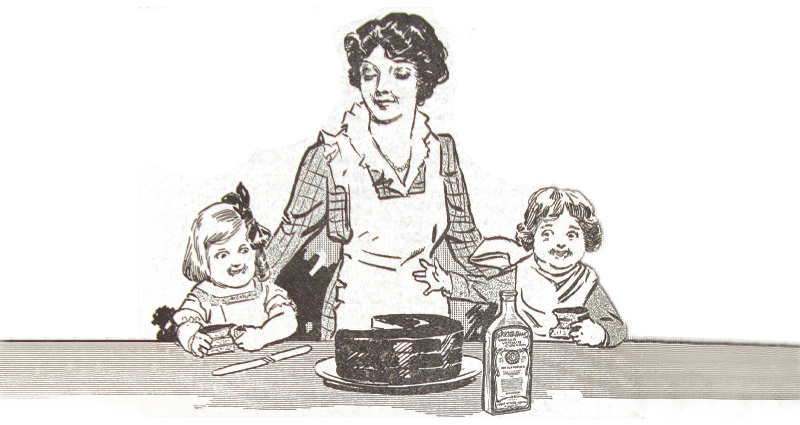Francis H. Leggett and his younger brother Theodore opened a store on Reade St in NYC in 1861. By the 1880s they had a ten-story building at W Broadway, Franklin and Varick Streets, distributing wholesale goods mainly to grocery stores, and they created products for mass distribution from recipes previously produced in the home. In 1902 Leggett & Co. obtained another ten-story building, and their growth continued.
In 1903 Richard Hellmann arrived in NYC from Germany, already with food experience. Hellmann accepted work with Francis H. Leggett Co., according to the history at Grub Americana. At first I experienced indignation thinking that Hellmann “took” Leggett’s mayo-like product to create Hellmann’s Mayonnaise. But wait, Richard Hellmann married Margaret Vossberg in 1905–long before Leggett’s 1911 “Salad Dressing: the Perfect Mayonnaise” and the happy newlyweds skipped away from Leggett’s to open a delicatessen where they proceeded to serve mayonnaise, jarring some for their customers to use within the day, as fresh mayonnaise doesn’t keep for long.

In 1911 Francis H. Leggett & Company introduced Premiere Salad Dressing, which reads like a mayonnaise in their promotional booklet. By 1926 they actually had on their label “Premiere Salad Dressing, A Perfect Mayonnaise.” Where did they get their recipe? Their literature says it was the result of Leggett & Co. perfecting a recipe that was in use “by the most skillful mistresses of American Cookery.”
What were Richard and Margaret Hellmann doing in 1911 when Leggett’s “mayo” was launched? Richard wasn’t feeling well so they sold most of their interest in the deli business and were traveling Europe. They certainly weren’t looking in the vats of the Leggett company for mayonnaise ideas. But the year of Leggett’s successful launch of the mayo-like salad dressing and during the short time the Hellmanns were in Europe, Richard Hellman connected with a former colleague in the food industry who gave him the idea for packaging mayonnaise. It seems as if within a few weeks the deli proprietor in NY died–I haven’t found his name– and because they still had a financial interest, the Hellmanns journeyed back to their daily fresh vat of mayonnaise at the deli, with extra mayo for sale to their customers as they had before, but this time they were equipped with a new mayonnaise packaging idea. In September 1912 production began of the mayonnaise in the Blue Ribbon jars, and they open a factory in 1915. Timewise, they were neck-in-neck with Leggett’s 1911 launch.
This was a great time to manufacture mayonnaise. After 1910, salads were in demand–all the rage– and women were getting used to leaving their kitchen work in the hands of willing food manufacturers that were popping up like mushrooms.
Being distributors, Francis H. Leggett & Company had a great advantage in distribution. In 1914, Leggett & Co. was on 27th St with a railway behind them next to Pier 66, and they had their own ship. They also had relationships with brokers and grocers nationwide and globally. By just giving away free samples and relying on word of mouth, Leggett’s Premiere Salad Dressing by 1921 was “the largest selling salad dressing in the world.”

And how was Hellmann’s doing? At the end of the first year in 1915 success was so great with the factory on 126th street in uptown Manhattan that they moved to a larger factory in Long Island City. In 1919, Hellmann’s was so successfully swimming in mayonnaise that they licensed a Chicago company to make it for them. Not all of it–Long Island City became “the largest mayonnaise factory in the world,” and another Hellmann factory opened in California.
I know of about ten mayonnaise companies in the early 1900s that were having success, as ready-made flavored fat is sure to please! But without the ready-made distribution channels that Leggett had, was it just as easy?
Anyway, all the companies were heading towards the same place — to be purchased by larger companies, seemingly all in the late 1920s, early 1930s. But the founding companies have a special place in history.


